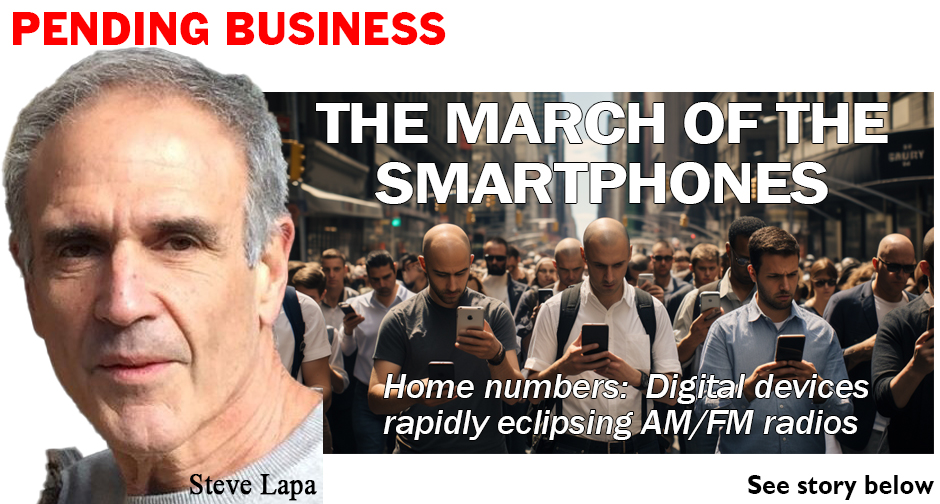By Gary Begin
Sound Advantage Media
 Broadcasting executives spend millions building their radio station’s brand in the marketplace. But is it being spent in the right place?
Broadcasting executives spend millions building their radio station’s brand in the marketplace. But is it being spent in the right place?
The frontline salesperson is a marketer’s greatest asset in creating brand justice and impact. But if you ask brand managers to look at their brand-building budgets, you’d probably see expenses allocated opposite to what drives brand purchase decisions.
Brand marketers continue to pump big bucks into extensive ad campaigns while doing next to nothing to deliver relevant, brand-supporting messages at the all-important, more significant level—the distance between a company’s sales voice and a prospect’s purchase decision.
What’s the answer?
It probably lies somewhere between (1) the unwillingness of radio stations and brand managers to go further “downstream” with their strategic recommendations and (2) the lack of useful tools to get them there.
Welcome to No Brand’s Land
Increasingly, a company’s branding success depends less on what they sell and more on how they sell it. Selected experts in branding seem to be coming around the idea that the power to make or break your brand-building effort lies not in the quality of your advertising but in the customer’s experience at the point of sale. In radio, that’s your over-the-air product and how your ad rep handles the advertiser.
On one side of No Brand’s Land, brand marketers can control all the implementation, ensuring the advertising campaign is right on, the media coverage generated by your on-air promotion is consistent, your Web site looks the same, and your corporate design is in place.
But on the other side of the No Brand’s Land, salespeople are still doing their own thing. They are cutting and pasting old proposals with outdated information and incorrect messages. They’re fabricating homegrown collateral tools and PowerPoint presentations that are, at best, inconsistent with corporate positioning or, worse, downright inaccurate.
The most frightening thing for brand marketers is that these cobbled-together documents must walk the halls of prospective customers, representing the company’s brand at the most critical points in the sales process. Ouch.
Adding insult to injury, the field-fabrication virus spreads exponentially as this lousy information is perpetuated across the channel on the brand’s intranet.
Crossing Over No Brand’s Land
To navigate and successfully cross No Brand’s Land effectively, marketers must start by adapting brand message creation and delivery to today’s strategic sales processes. Two trends will drive marketers’ efforts to create brand-supporting content that helps salespeople sell.
Trend #1: Value Selling
For more than a decade, sales training and methodology experts have focused on improving the consultative selling skills of salespeople—especially in complex selling environments. The concept is simple: first, salespeople identify customers’ needs; then, they demonstrate the ability of a solution to respond to that customer’s specific needs successfully.
Often called Value Selling or Solution Selling, this dynamic and interactive sales process replaces previously static, one-way techniques that debate the merits of competing features and functions.
While salespeople move toward creating a much more customized sales experience for each prospect, most marketing departments continue to deliver generic messaging using static collateral tools—a one-size-fits-all approach for a one-to-one world. No wonder salespeople are forced to scramble to create custom content, piecemealed from various sources, to demonstrate they have listened to the customer.
The first thing brand managers can do to help is translate their high-level positioning into street-ready value propositions and solution messaging that speak to customers the way salespeople have been trained to sell:
- Create customer empathy by identifying and demonstrating a proper understanding of the critical do-or-die issues facing your customers. Do that for each level of the decision-making team and link it back to how they do their jobs today.
- Next, determine and articulate the risks if they do not address these issues. Also, firmly establish and highlight the rewards if they do act. Take special care to find out how your customers will define success—determine what they want to brag about if they are successful in achieving positive results.
- Then demonstrate how your company’s solution helps them respond specifically—and successfully—to their key do-or-die issues.
Trend #2: Dynamic, Personalized Collateral Building
Value selling has raised the bar, forever changing customer expectations about sales experiences. Customers expect company interactions to be personal, relevant, and tailored to their specific needs.
Meanwhile, marketing departments have tried to keep pace by adopting segmentation strategies, doing their best to tailor messages and create more customer-relevant positioning. However, the tools to deliver these increasingly sophisticated messages through the sales channels have lagged. So, we’ve seen a proliferation of static collateral tools designed to fit every occasion.
Unfortunately, salespeople are neither warehouse managers nor librarians, and they have difficulty tracking and finding suitable materials when needed. In response, marketers have set up sales intranets to supply 24×7 access to support materials.
While these intranets improve accessibility to materials, they don’t resolve the most significant issue facing today’s value-selling salespeople: the need to provide prospects with dynamic, personalized sales communications. With only static documentation, salespeople begin creating unique, customized documents for each sales situation.
Typically, this happens at the expense of the brand and the company. The lack of consistency between radio stations and from salesperson to salesperson—undermines the millions spent on brand awareness advertising. The extra time spent by salespeople crafting these personalized proposals, presentations, and collateral pieces keeps them from time better spent with customers.
Marketing’s big win is that every radio salesperson, even within a multi-entertainment environment, will now communicate a consistent company message. Imagine the brand-building power unleashed when sales reps begin delivering a persuasive, powerful, and pre-approved message at every point of customer contact.
Gary Begin can be contacted at: garybegin10@gmail.com.
Share this with your network
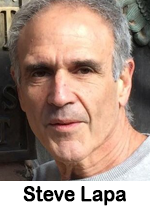 Are you a sales curmudgeon? You know, that old-school, out-of-touch terrestrial radio ad sales rep who is too lazy to learn the new digital/social media sales world?
Are you a sales curmudgeon? You know, that old-school, out-of-touch terrestrial radio ad sales rep who is too lazy to learn the new digital/social media sales world?


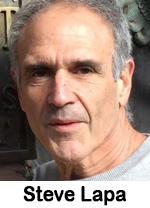 I’m no expert, but I do have a theory.
I’m no expert, but I do have a theory.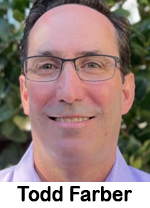 sales division. Farber was most recently an executive director in sales at The Walt Disney Company and ABC. iHeartMedia SVP of sales Joe Donnarumma says, “Nicole’s extensive expertise and Todd’s strategic acumen, paired with their
sales division. Farber was most recently an executive director in sales at The Walt Disney Company and ABC. iHeartMedia SVP of sales Joe Donnarumma says, “Nicole’s extensive expertise and Todd’s strategic acumen, paired with their 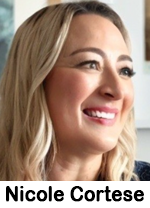 proven leadership in navigating the Bay Area’s competitive landscape, make them ideally suited to lead our sales teams toward greater success.” iHM San Francisco region president AJ Punjabi adds, “Bringing Nicole and Todd on board reinforces our mission to innovate and excel. Their fresh approaches are key to elevating our position as a leader in the evolving landscape of audio and digital media.”
proven leadership in navigating the Bay Area’s competitive landscape, make them ideally suited to lead our sales teams toward greater success.” iHM San Francisco region president AJ Punjabi adds, “Bringing Nicole and Todd on board reinforces our mission to innovate and excel. Their fresh approaches are key to elevating our position as a leader in the evolving landscape of audio and digital media.” 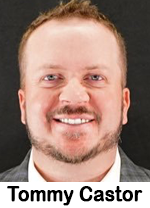 sales. Castor served with then-Entercom Wichita in 2005. Most recently he served as VP of sales and marketing for the ECHL’s Wichita Thunder. Audacy Wichita SVP and market manager Becky Domyan states, “Tommy has an incredible knowledge of the digital space that will help take our revenue to the next level. He has an energy and enthusiasm that is contagious.” Castor who succeeds the recently retired Lisa Crider, also serves as co-host of the “Sports Daily” program on KFH, Wichita.
sales. Castor served with then-Entercom Wichita in 2005. Most recently he served as VP of sales and marketing for the ECHL’s Wichita Thunder. Audacy Wichita SVP and market manager Becky Domyan states, “Tommy has an incredible knowledge of the digital space that will help take our revenue to the next level. He has an energy and enthusiasm that is contagious.” Castor who succeeds the recently retired Lisa Crider, also serves as co-host of the “Sports Daily” program on KFH, Wichita.  Broadcasting executives spend millions building their radio station’s brand in the marketplace. But is it being spent in the right place?
Broadcasting executives spend millions building their radio station’s brand in the marketplace. But is it being spent in the right place? Have you tried the $7 cup of coffee at Starbucks?
Have you tried the $7 cup of coffee at Starbucks? NYC include WMCA “The Mission” and WNYM “AM 970 The Answer.” This is a fantastic opportunity for the right individuals. VP/GM Jerry Crowley who has been running Salem’s NYC market for 11 years, tells TALKERS, “I know our future is stronger than ever and that’s based on reality – contrary to how a lot of broadcasters think. We are looking for two multi-talented folks to participate in harnessing the power of the number one Christian/conservative cluster in America. Interested candidates should contact
NYC include WMCA “The Mission” and WNYM “AM 970 The Answer.” This is a fantastic opportunity for the right individuals. VP/GM Jerry Crowley who has been running Salem’s NYC market for 11 years, tells TALKERS, “I know our future is stronger than ever and that’s based on reality – contrary to how a lot of broadcasters think. We are looking for two multi-talented folks to participate in harnessing the power of the number one Christian/conservative cluster in America. Interested candidates should contact  leaders, mentors, and game changers within all aspects of radio broadcasting. Four candidates from the radio broadcasting industry – within all of the disciplines of radio including sales, marketing, programming, and digital – will be selected for the 2023- 2024 program. MIW board president Ruth Presslaff comments, “We are so pleased to launch the Mildred Carter mentorship program with the very generous and consistent support of Beasley Media Group and Entravision. Based on our application pool, it’s clear there’s a great need for mentoring and we are here for it.”
leaders, mentors, and game changers within all aspects of radio broadcasting. Four candidates from the radio broadcasting industry – within all of the disciplines of radio including sales, marketing, programming, and digital – will be selected for the 2023- 2024 program. MIW board president Ruth Presslaff comments, “We are so pleased to launch the Mildred Carter mentorship program with the very generous and consistent support of Beasley Media Group and Entravision. Based on our application pool, it’s clear there’s a great need for mentoring and we are here for it.” 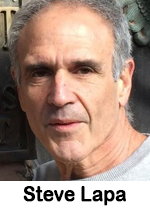 It may seem impossible, but you need to stay in your lane.
It may seem impossible, but you need to stay in your lane.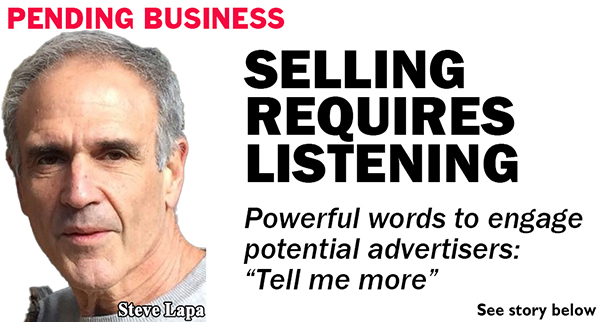
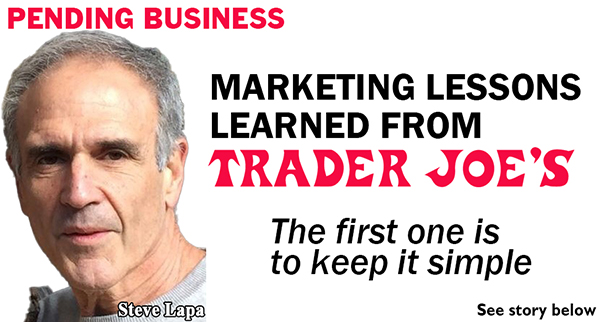
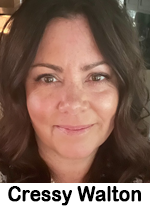 grad began her career in the Phoenix market. Phoenix region SVP of sales Nancie Sullivan comments, “I couldn’t be more thrilled to have Cressy join our team here in Phoenix. With her knowledge of the market and her extensive experience, she will be an integral part of the leadership team who will continue to strengthen our position in the market and in the Phoenix ad community.”
grad began her career in the Phoenix market. Phoenix region SVP of sales Nancie Sullivan comments, “I couldn’t be more thrilled to have Cressy join our team here in Phoenix. With her knowledge of the market and her extensive experience, she will be an integral part of the leadership team who will continue to strengthen our position in the market and in the Phoenix ad community.”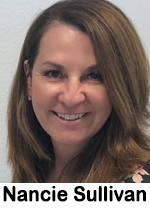 for the Phoenix Region that includes news/talk KFYI-AM and sports talk KGME, plus six music brands. iHeartMedia Phoenix region president Linda Little says, “I am thrilled to have Nancie step into this role and lead our Phoenix sales team to the next level. I know Nancie will bring her passion, creativity and leadership talents to help us further grow our business and partnerships.”
for the Phoenix Region that includes news/talk KFYI-AM and sports talk KGME, plus six music brands. iHeartMedia Phoenix region president Linda Little says, “I am thrilled to have Nancie step into this role and lead our Phoenix sales team to the next level. I know Nancie will bring her passion, creativity and leadership talents to help us further grow our business and partnerships.” iHeartMedia Chicago where he previously served as director of national sales after having served most recently with TelevisaUnivision Chicago. He began his radio sales career with WTOP-AM and WASH-FM in Washington, DC. iHeartMedia Chicago SVP of sales Adam Kurtz says, “Bill’s media experience, specifically in the Chicago market, will undoubtedly contribute to the continued growth of our team. I am looking forward to working with him to achieve maximum revenue success.”
iHeartMedia Chicago where he previously served as director of national sales after having served most recently with TelevisaUnivision Chicago. He began his radio sales career with WTOP-AM and WASH-FM in Washington, DC. iHeartMedia Chicago SVP of sales Adam Kurtz says, “Bill’s media experience, specifically in the Chicago market, will undoubtedly contribute to the continued growth of our team. I am looking forward to working with him to achieve maximum revenue success.”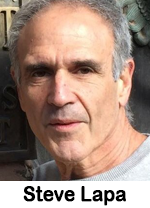 Which is the more important “check the box” trait – persistence or passion?
Which is the more important “check the box” trait – persistence or passion? content, distribution and marketing its audio segment. Good Karma chief Craig Karmazin tells SBJ, “This is the culmination of what we’ve been working towards for the last 20-plus years. For us over the last 20 years, we’ve been focused on the medium and focused on the ESPN brand. Now for us to be able to run the sales operations of the entire network and the podcast business, it truly is like a culmination of everything we’ve been working towards in this partnership with them.”
content, distribution and marketing its audio segment. Good Karma chief Craig Karmazin tells SBJ, “This is the culmination of what we’ve been working towards for the last 20-plus years. For us over the last 20 years, we’ve been focused on the medium and focused on the ESPN brand. Now for us to be able to run the sales operations of the entire network and the podcast business, it truly is like a culmination of everything we’ve been working towards in this partnership with them.”  Amazing fact: In ancient times, from 1962-1972, the highest-paid on-air talent in New York City was “an overnight guy.” He was paid salary plus sales response. I’m talking about Long John Nebel on WOR, WNBC, then WMCA. Long John’s live reads moved product because his audience was captive. One-to-one his listeners were attached to their radios in the truck cab, night watchman’s building lobby, parents pacing with their babies, students cramming. His background was not in radio; he was a skilled auctioneer. Obviously, the same listeners exist today – and are anxious for someone to talk to them. Check out this old clip of Nebel in action:
Amazing fact: In ancient times, from 1962-1972, the highest-paid on-air talent in New York City was “an overnight guy.” He was paid salary plus sales response. I’m talking about Long John Nebel on WOR, WNBC, then WMCA. Long John’s live reads moved product because his audience was captive. One-to-one his listeners were attached to their radios in the truck cab, night watchman’s building lobby, parents pacing with their babies, students cramming. His background was not in radio; he was a skilled auctioneer. Obviously, the same listeners exist today – and are anxious for someone to talk to them. Check out this old clip of Nebel in action: 